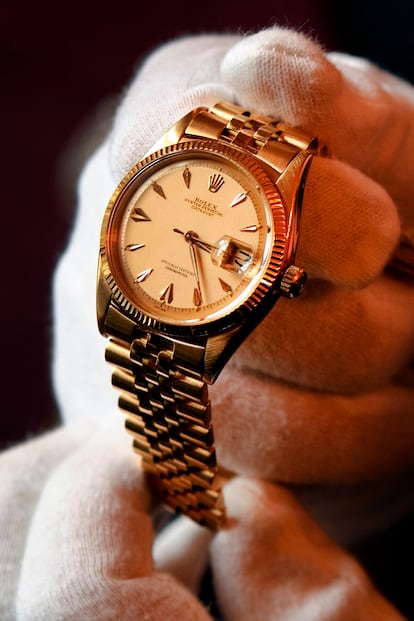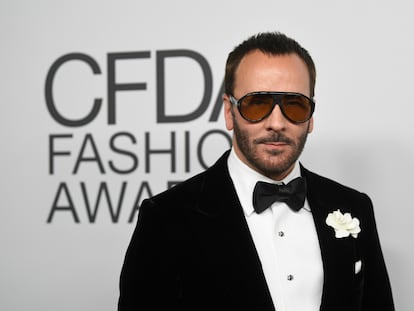Why buying a Rolex may be a better investment than stock
Preowned sales reached $22 billion in 2021, accounting for nearly one-third of the overall $75 billion luxury watch market

They’re both a fashion statement and a symbol of status. They mix state-of-the-art technology and the teachings of centuries-old trade. Luxury watches have always been desired as an accessory; but now people are buying them as an investment — and a very profitable one at that. Any predication that demand for traditional watches would demise with the advent of smart devices has been proven wrong. According to a recent study by Boston Consulting Group (BCG), the secondhand market for models from the three largest brands (Rolex, Patek Philippe and Audemars Piguet) rose at an annual rate of 20% from August 2018 to January 2023. That’s despite the market slowdown triggered by the Covid-19 pandemic. During that same period, the US S&P 500 stock index rose only 8%.
And as the market grows, new investors are entering the fray. Preowned watch sales reached $22 billion in 2021, accounting for nearly one-third of the overall $75 billion luxury watch market. “The secondhand watch market once evoked images of back alley deals and discounts, with dubious authenticity and a high risk of fakes and fraud. Today’s market is transparent, fueled by online information sharing, supported by authentication services, and composed of knowledgeable buyers and established sellers,” the report states.
Younger collectors are one of the main drivers of demand for luxury watches. Platforms such as WatchBox, Chrono24 and Watchfinder have helped grow the market, especially among Gen Z and millennial buyers. Online sales have almost surpassed those in auction houses and, according to BCG estimates, they will account for 60% of the secondhand luxury watch market by 2026.
What’s more, wealthy investors are also looking at luxury watches as a way to diversify their traditional assets (stocks, bonds and currencies) and hedge against inflation. “For these and other investors, luxury watches stand out as a class of alternative assets because of the strong demand for them and because they have generally delivered strong price performance in the market over the past five to 10 years,” the study argues.
This was seen during the recession that followed the 2008 market crisis, when the price of luxury watches bounced back within less than two years, while other assets took much longer to recover. “Buyers regard the category as a stable investment built on reputable brands and supported by a consumer base of high-net-worth individuals,” the report states. Between 2013 and 2022, the price of secondhand watches grew in value at an average annual rate of 7%, outstripping other luxury items such as jewelry, bags, art and furniture.
According to the report, most of the demand is concentrated on a handful of models: Patek Philippe Nautilus, Audemars Piguet Royal Oak, and Rolex Daytona and GMT-Master II. “On the secondhand market, these models typically fetch up to 200% of firsthand market prices. Individual Rolex Cosmograph Daytona watches, with a retail price of $14,800, were selling recently on preowned watch exchanges for $24,250 to $38,500,” the BCG report adds.
In addition to the traditional brands, a group of new independent companies are also performing strongly, such as F. P. Journe, De Bethune and H. Moser & Cie. “The market for independent watches benefits from the industry’s limited production capacity, which enhances scarcity and collectability,” explains the study. The secondhand luxury watch market is most active in the U.S. and Europe, but in Asia, interest is also growing, according to BCG.
Sign up for our weekly newsletter to get more English-language news coverage from EL PAÍS USA Edition
Tu suscripción se está usando en otro dispositivo
¿Quieres añadir otro usuario a tu suscripción?
Si continúas leyendo en este dispositivo, no se podrá leer en el otro.
FlechaTu suscripción se está usando en otro dispositivo y solo puedes acceder a EL PAÍS desde un dispositivo a la vez.
Si quieres compartir tu cuenta, cambia tu suscripción a la modalidad Premium, así podrás añadir otro usuario. Cada uno accederá con su propia cuenta de email, lo que os permitirá personalizar vuestra experiencia en EL PAÍS.
¿Tienes una suscripción de empresa? Accede aquí para contratar más cuentas.
En el caso de no saber quién está usando tu cuenta, te recomendamos cambiar tu contraseña aquí.
Si decides continuar compartiendo tu cuenta, este mensaje se mostrará en tu dispositivo y en el de la otra persona que está usando tu cuenta de forma indefinida, afectando a tu experiencia de lectura. Puedes consultar aquí los términos y condiciones de la suscripción digital.
More information
Archived In
Últimas noticias
Tiger Woods turns 50: Will he continue playing on the PGA Tour or take a back seat?
The surreal journey of James Nnaji, the Barcelona youth player selected in the NBA Draft who ended up in the NCAA
Trump claims peace in Ukraine is near, but Moscow suggests otherwise
A survivor’s account of the Interoceanic Train accident: ‘We were scared because of the speed on the curve’
Most viewed
- Oona Chaplin: ‘I told James Cameron that I was living in a treehouse and starting a permaculture project with a friend’
- Reinhard Genzel, Nobel laureate in physics: ‘One-minute videos will never give you the truth’
- Sinaloa Cartel war is taking its toll on Los Chapitos
- Why the price of coffee has skyrocketed: from Brazilian plantations to specialty coffee houses
- Chevy Chase, the beloved comedian who was a monster off camera: ‘Not everyone hated him, just the people who’ve worked with him’











































